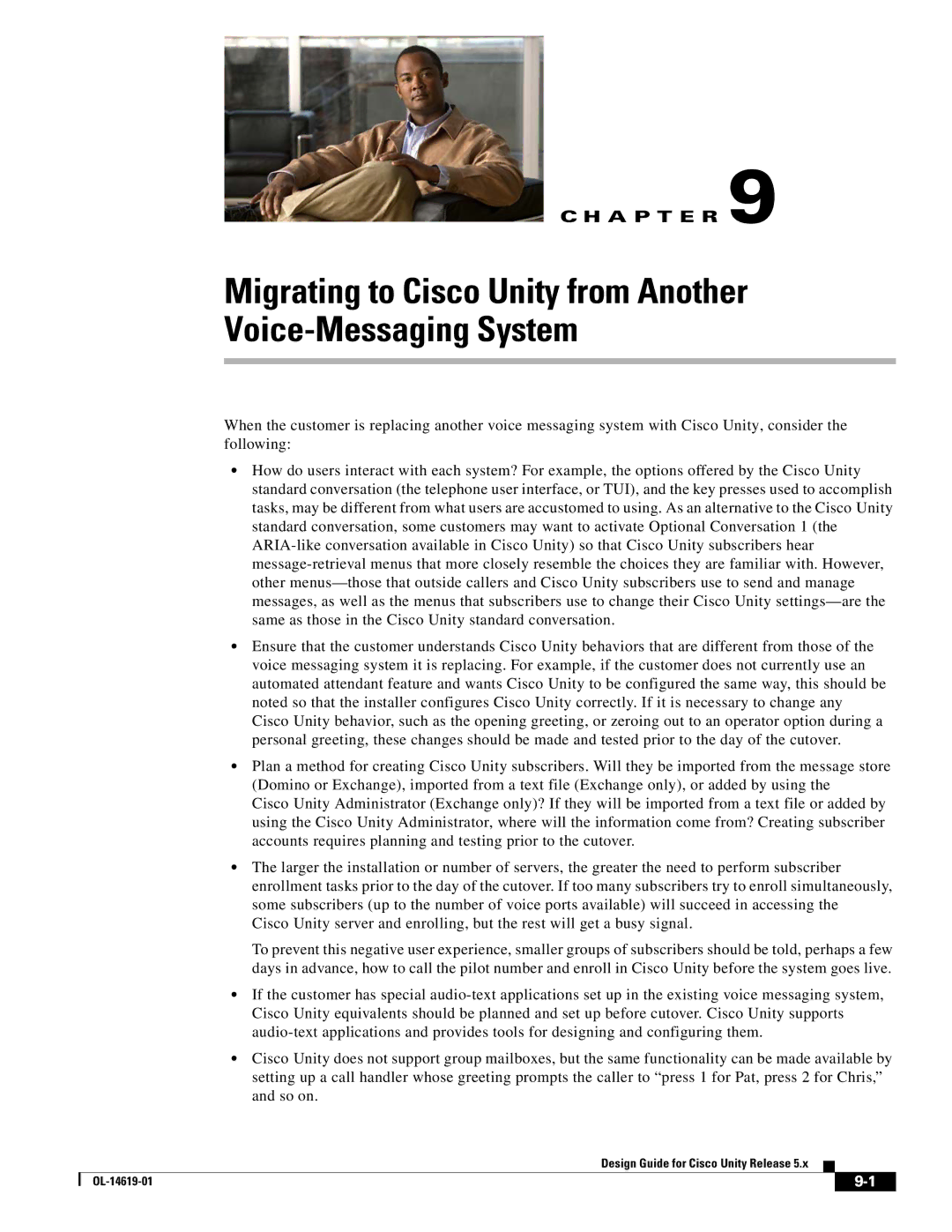
C H A P T E R 9
Migrating to Cisco Unity from Another
Voice-Messaging System
When the customer is replacing another voice messaging system with Cisco Unity, consider the following:
•How do users interact with each system? For example, the options offered by the Cisco Unity standard conversation (the telephone user interface, or TUI), and the key presses used to accomplish tasks, may be different from what users are accustomed to using. As an alternative to the Cisco Unity standard conversation, some customers may want to activate Optional Conversation 1 (the
•Ensure that the customer understands Cisco Unity behaviors that are different from those of the voice messaging system it is replacing. For example, if the customer does not currently use an automated attendant feature and wants Cisco Unity to be configured the same way, this should be noted so that the installer configures Cisco Unity correctly. If it is necessary to change any Cisco Unity behavior, such as the opening greeting, or zeroing out to an operator option during a personal greeting, these changes should be made and tested prior to the day of the cutover.
•Plan a method for creating Cisco Unity subscribers. Will they be imported from the message store (Domino or Exchange), imported from a text file (Exchange only), or added by using the
Cisco Unity Administrator (Exchange only)? If they will be imported from a text file or added by using the Cisco Unity Administrator, where will the information come from? Creating subscriber accounts requires planning and testing prior to the cutover.
•The larger the installation or number of servers, the greater the need to perform subscriber enrollment tasks prior to the day of the cutover. If too many subscribers try to enroll simultaneously, some subscribers (up to the number of voice ports available) will succeed in accessing the Cisco Unity server and enrolling, but the rest will get a busy signal.
To prevent this negative user experience, smaller groups of subscribers should be told, perhaps a few days in advance, how to call the pilot number and enroll in Cisco Unity before the system goes live.
•If the customer has special
•Cisco Unity does not support group mailboxes, but the same functionality can be made available by setting up a call handler whose greeting prompts the caller to “press 1 for Pat, press 2 for Chris,” and so on.
Design Guide for Cisco Unity Release 5.x
|
|
| |
|
|
